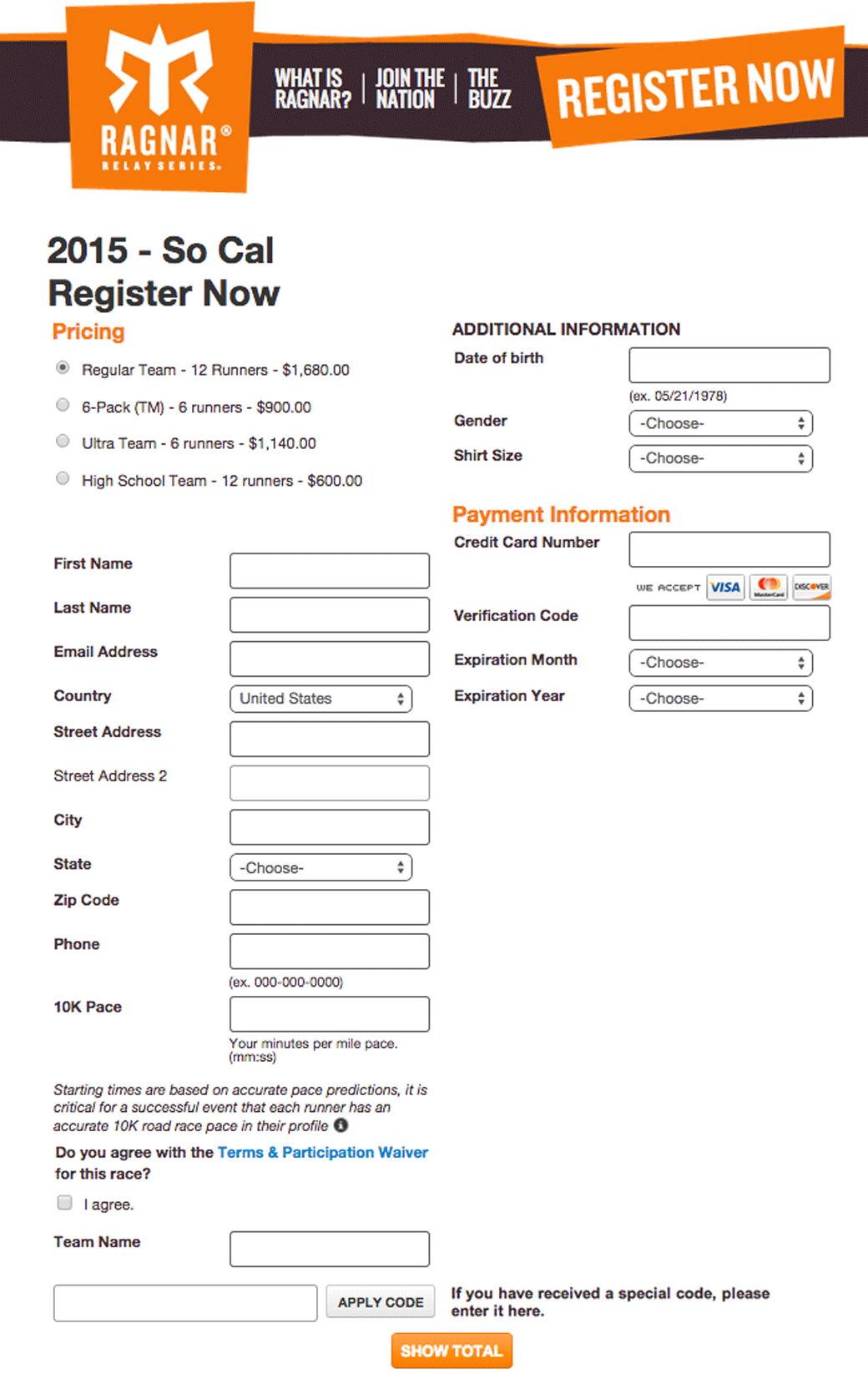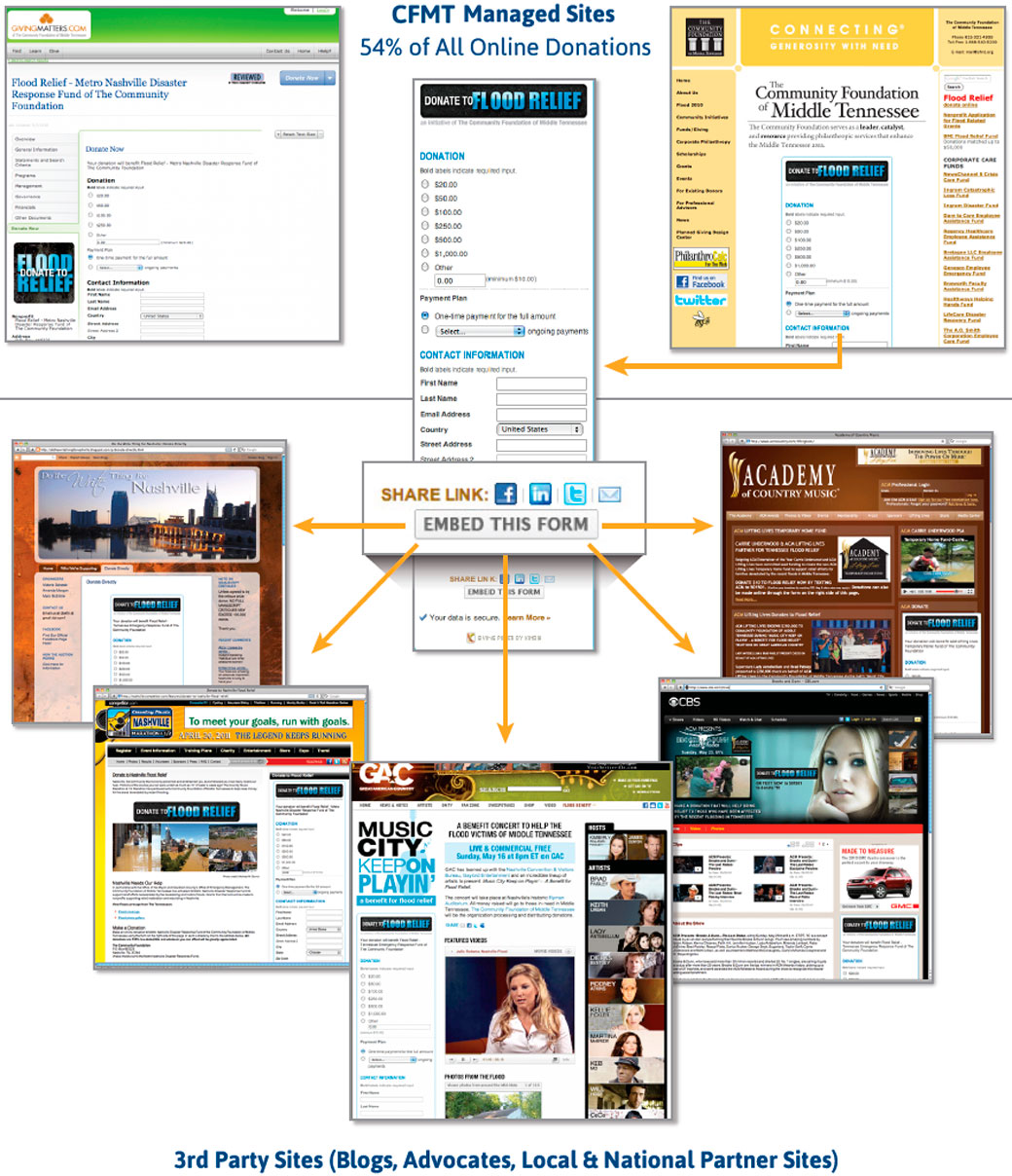Secure Portable Payment Form
Challenge
The initial release of the portable form had limited features. Configuring it involved the customer writing JavaScript. The presidential races were heating up, and the customer base growing. Form Code was procedural, and was delivered along with data it consumed. Competitor forms were isolated in a unfamiliar hosted environment.
Approach
I first decomposed form app into MVC components. Delivering the app separately from configuration data made static caching possible. I established a broad matrix of supported browsers. The snippet became one line, with no developer skill needed. Customizable branding gave rich and varied style without altering product code. Complex validation and rulesets virtually eliminated data entry error.

Fully branded registration form
The form became highly customizable, with a public API and styling classes.
Results
Concurrent rapid development iterations became possible with the modular object-oriented design. Form user always in context with branding, leading to reduced abandonment. Faster load times and streamlined form completion reduced friction in the transaction. Browsers more than a decade old did not affect transactions. Internet Explorer 6 enjoyed all enhancements except for configurable grids.
Rapid form sharing supports disaster response
Competing technologies could not respond in a timely fashion.

Disaster Response Case
End users could embed form via click, copy and paste.